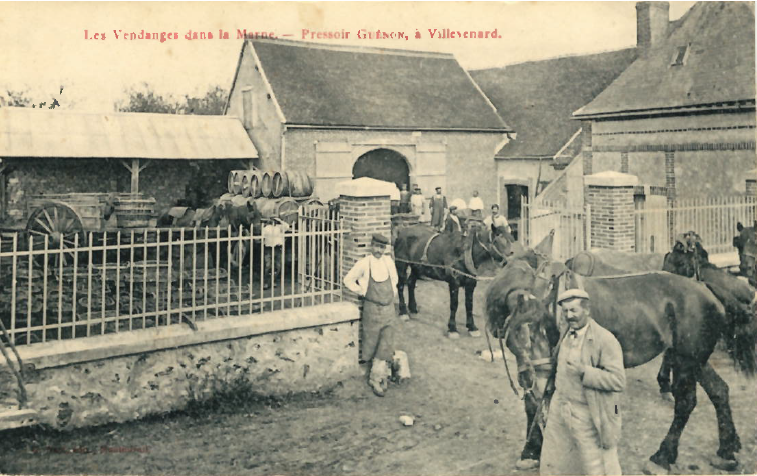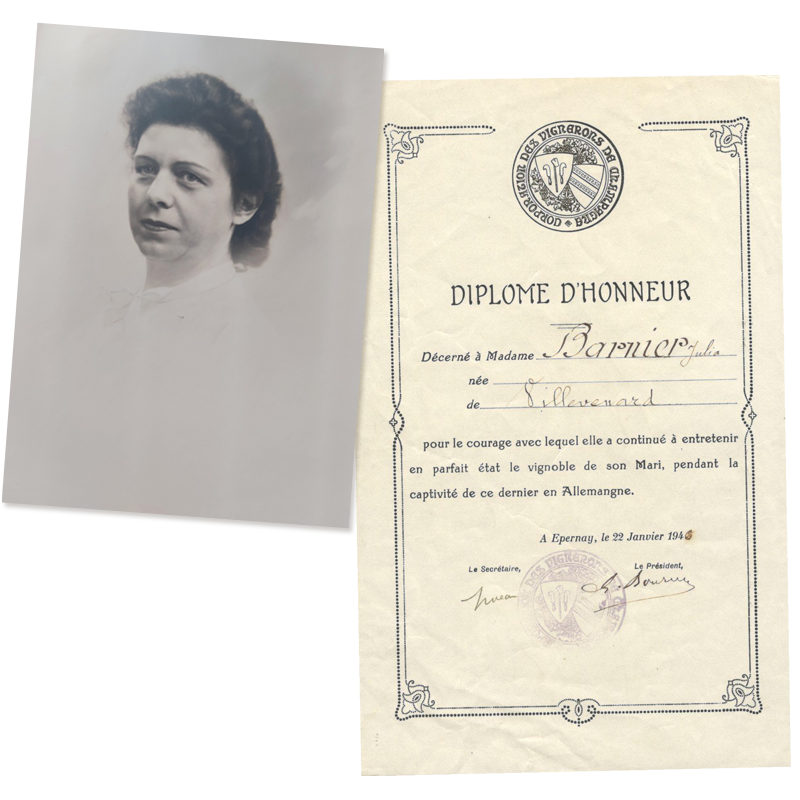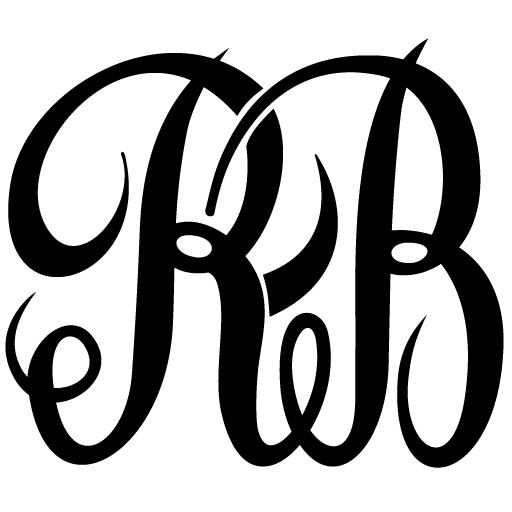Claude Barnier is the first known winegrower in the family.
In the distant past, vines were planted on the Champagne hillsides because they were not very suitable for farming.
He was followed by Léon BARNIER, who took over the vineyards. He has to suffer the phylloxera crisis that affected the whole Champagne in the early 1900s.
Thanks to the rootstock system, Champagne will recover from this crisis.
There are still plots planted by Léon BARNIER in our vineyard, and these are used to make our 100% Meunier.
The GUENON wine press in Villevenard in the middle of the harvest.


Roger BARNIER
Before becoming a winegrower, Roger BARNIER, son of Léon BARNIER, worked as a chef in a Parisian palace with his brother Yvon.
After a few years in Paris, Roger Barnier returned to the family estate and became the first member of the family to make his own cuvées by becoming a Récoltant Manipulant..
During the Second World War, Roger Barnier was taken prisoner in Germany.
During his imprisonment and until his return 5 years later, it was his wife, Julia Barnier, who took charge of the vineyard and winemaking in addition to her work as a village teacher.
She will continue to co-manage the work in the vineyard and cellar until her grandson arrives.
Julia BARNIER

Jean BARNIER

Subsequently, their son Jean Barnier took over the business.
At the start of his career, Jean worked the soil with a donkey.
He saw the gradual arrival of chemicals and motorised equipment in the vineyards, which made his work easier and shaped the Champagne vineyards as we know it today.
Today it is Frédéric BERTHELOT, Roger BARNIER's grandson, who has become the guardian of the Roger BARNIER style.
The estate cultivates around 8 hectares of vines spread over more than 42 plots between Villevenard and Broyes.
Wise from his grandfather and oncle experiences, Frédéric love to cook and wish to lead the vinyards with the respect of the land and of the terroir.
He gradually oriented the house's style towards more gastronomic Champagnes and developed the range.
This led to the creation of the l'Oubliée cuvée in 2005, then the 100% Meunier in 2009, and finally the parcel-based cuvées of the localities: Les Bacons in 2016, Les Chauffours in 2017 and Les Foulonnes in 2019.
Frédéric BERTHELOT

